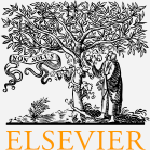Sahaja Yoga, com a sistema de meditació sense ànim de lucre basat en l’experiència, i amb l’anhel d’incorporar allò de Veritable que hi ha en totes les cultures, ha estat focus d’estudi per molts científics a tot el món. Aquests estudis, publicats en revistes i publicacions de prestigi acadèmic, han provat els beneficis en la salut i el benestar que comporta la pràctica continuada de Sahaja Yoga.
Els beneficis de Sahaja Yoga s’han provat científicament en el:
- Tractament de les arítmies cardíaques.
- Tractament de l’asma.
- Epilèpsia.
- Desequilibris en la tensió arterial.
- Ansietat i depressió.
- Desordres de la menopausa.
- Trastorn per dèficit d’atenció e hiperactivitat en nens (ADHD).
- Abusos de drogues.
- Patologies d’arrel psicosomàtica com el Stress.
- Psicosi.
A continuació es disposa de l’elenc de bibliografia acadèmica dels estudis de Sahaja Yoga a nivell internacional. Aquests estudis mèdic-científics han demostrat els beneficis del Yoga tan a nivell de salut física, mental com emocional.
- Aftanas L.I., Golocheikine S.A. (2001): Human anterior and frontal midline theta and lower alpha reflect emotionally positive state and internalized attention: high-resolution EEG investigation of meditation. Neuroscience Letters 310: 57-60.
- Aftanas L.I., Golocheikine S.A. (2002): Non-linear dynamic complexity of the human EEG during meditation. Neuroscience Letters 330: 143-146.
- Aftanas L.I., Golosheikin S.A. (2003): Changes in cortical activity in altered states of consciousness: the study of meditation by high-resolution EEG. Human Physiology 29(2):143-151.
- Aftanas L.i., Golosheykin S.A. (2005): Impact of regular meditation practice on EEG activity at rest and during evoked negative emotions. International Journal of Neuroscience, 115(6): 893-909.
- Choudhary R., (2011): Effect of Sahaja Yoga Meditation on the Nutritional Assessment of University Students. International Journal of Sports Science and Engineering 5(2): 077-084.
- Chugh D.K. (1997): The effects of Sahaja Yoga in bronchial asthma and essential hypertension. New Delhi Medicos, 13(5): 46-47.
- Gupta H.L., Dudani U., Singh S.H., Surange S.G., and W. Selvamurthy (1991): Sahaja Yoga in the management of intractable epileptics. Journal of Association of Physicians of India 39(8): 649.
- Hackl, W. (1995): Die Auswirkungen von Sahaja Yoga auf das Drogenkonsumverhalten (The effect of Sahaja Yoga on drug consume behaviour). Doctoral thesis submitted to the University in Vienna, 1995.
- Harrison L.J., Manocha R., and K. Rubia (2004): Sahaja Yoga Meditation as a Family Treatment Programme for Children with Attention Deficit-Hyperactivity Disorder, Clinical Child Psychol Psychiatry 9 (4): 479-497.
- Hernández Sergio E., Suero José, Rubia Katya, and González-Mora José L.: Monitoring the Neural Activity of the State of Mental Silence While Practicing Sahaja Yoga Meditation. The Journal of Alternative and Complementary Medicine. March 2015, 21(3): 175-179.
- Kenan Y., Nasir S., and Y. Ertan (2011): Sahaja yoga: A unique adjunctive approach for the management of cardiac arrhythmias? International Journal of Cardiology 152 (1): 99-100.
- Manocha R., Black D., and L. Wilson (2012): Quality of Life and Functional Health Status of Long-Term Meditators. Evidence-Based Complementary and Alternative Medicine. Volume 2012
- Manocha R., Black D., Sarris J., and C. Stough (2011): A Randomized, Controlled Trial of Meditation for Work Stress, Anxiety and Depressed Mood in Full-Time Workers. Evidence-Based Complementary and Alternative Medicine. Volume 2011
- Manocha R., Black D., Ryan J., Stough C., and D. Spiro (2010): Changing Definitions of Meditation: Physiological Corollorary, Journal of the International Society of Life Sciences, 28 (1)
- Manocha R., Marks G., and C. Salome (2002): Sahaja yoga in the management of moderate to severe asthma: a randomised controlled trial. Thorax 57: 110-115.
- Manocha M., Semmar B (2007): A Preliminary Study of Efficacy and Safety of Sahaja Yoga Meditation as a Treatment for Hot Flushes and Other Symptoms of the Perimenopause. Journal of Clinical Psychology in Medical Settings, 14, 266-273.
- Mishra R. (1993): Catecholamine, indolamine and other amine cell surface receptors: Seven spanning loops in the organisation in the cell membrane. Paper presented at the “Medical Aspects of Sahaja Yoga”, Medical conference, held in New Delhi India, 1993.
- Mishra R., Barlas C.L.A., and D. Barone (1993): Plasma beta-endorphin levels in humans: Effect of Sahaja Yoga. Paper presented at the “Medical Aspects of Sahaja Yoga”, Medical conference, held in New Delhi India, 1993.
- Morgan D., (2001): Sahaja Yoga: an ancient path to modern mental health? Transpersonal Psychology Review, 4 (4): 41–49.
- Panjwani U., Gupta H.L., Singh S.H., Slevamurthy W., and U.C. Rai (1995): Effect of SahajaYoga Practice on stress management in patients with epilepsy. Indian Journal of Physiology and Pharmacology 39(2): 111-116.
- Panjwani U., Selvanurthy W., Singh S.H., Gupta H.L., Thakur L., and U.C. Rai (1996): Effect of Sahaja Yoga practice on seizure control & EEG changes in patients of epilepsy. Indian Journal of Medical Research 103(3): 165-172.
- Panjwani U., Selvamurthy W., Singh S.H., Gupta H.L., Mukhopadhyay S., and L. Thakur (2000): Effect of Sahaja Yoga meditation on auditory evoked potentials (AEP) and visual contrast sensitivity (VCS) in epileptics. Appl Psychophysiol Biofeedback 25(1): 1-12.
- Rubia, K. (2009): The Neurobiology of Meditation and its clinical effectiveness in psychiatric disorders. Biological Psychology 82, 1-11.
- Rai U.C., Sethi S., and S. H. Singh (1997): Some effects of Sahaja Yoga and its role in the prevention of stress disorders. New Delhi Medicos, 13(5): 35-38.
- Rai U.C., Sethi S., and S.H. Singh (1988): Some effects on Sahaja Yoga and its role in the prevention of stress disorders. Journal of International Medical Sciences, 2(1): 19-23.
- Rai, U.C. (1995): Role of Sahaja Yoga in the treatment of bronchial asthma. Medical Science enlightened, 98-109, Life Eternal Trust, New Delhi.
- Rai U.C. (1993): Medical Science Enlightened. Life Eternal Trust, New Delhi, 1993.
- Ramaratnam S., Sridharan K. (2008): Yoga para la epilepsia (Revisión Cochrane traducida). En La Biblioteca Cochrane Plus, 2008 Número 4. Oxford: Update Software Ltd. Disponible en: http://www.update-software.com. (Traducida de The Cochrane Library, 2008 Issue 3. Chichester, UK: John Wiley & Sons, Ltd.)
- Sharma V. K., Das S., Mondal S., Goswami U., and A. Gandhi (2006): Effect of Sahaja Yoga on neuro cognitive functions in patients suffering from major depression. Indian Journal of Physiology and Pharmacology, 50 (4): 375–383.
- Spiro D.M. (1996): The benefits of Health of Sahaja Yoga. Proceedings of the Asssociation of Polish Scientists of Lithuania.
- Usha D.S. (1991): The role of Sahaja Yoga in the management of epilepsy. Thesis submitted to University of Delhi, India, 1991.
Aquesta entrada també està disponible en: Spanish









 Español
Español Català
Català